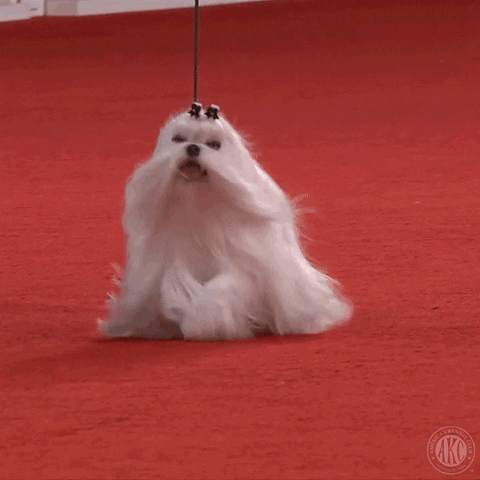
We’ve all seen cartoons in which a tiny dog is walking so fast that her legs are a blur. Artistic license, right? Cartoons are usually meant to make us laugh.
Animators, however, aren’t entirely off the mark when they depict small dogs running on legs that move like a buzz saw. Toy breeds do move faster than their larger counterparts because their legs are shorter. Think of Giacomo Balla’s painting Dynamism of a Dog on a Leash.
The co-authors of K-9 Structure and Terminology, Edward M. Gilbert, Jr. and Thelma Brown, cleverly use clock pendulums to explain this. Shortening the suspension strings of a pendulum length makes the clock run faster. For essentially the same reason, toy breeds have quick strides, so much so that as they trot in a show ring, it can be challenging to see faults that are more easily spotted in a larger breed. Adding coat adds another “degree of difficulty” for a judge. As an aside, this shouldn’t be confused with the term, “pendulum movement” which applies to front leg motion typified by the movement of the Fox Terrier in that it lacks elbow and pastern flex.
Because leg length determines reach (and at the risk of stating the obvious), toy breeds don’t cover as much ground as a longer legged dog. As Claudia Waller Orlandi, PhD writes, “The longer the leg, the more the reach.” She adds, “Up to a certain leg length, a longer leg increases speed.” Beyond a certain length of leg, speed actually decreases because more muscle power is needed. And we haven’t even touched upon angulation. Getting into that and leg length for “speedy breeds” (think sighthound) takes us in a different direction which we’ll leave for another post.
